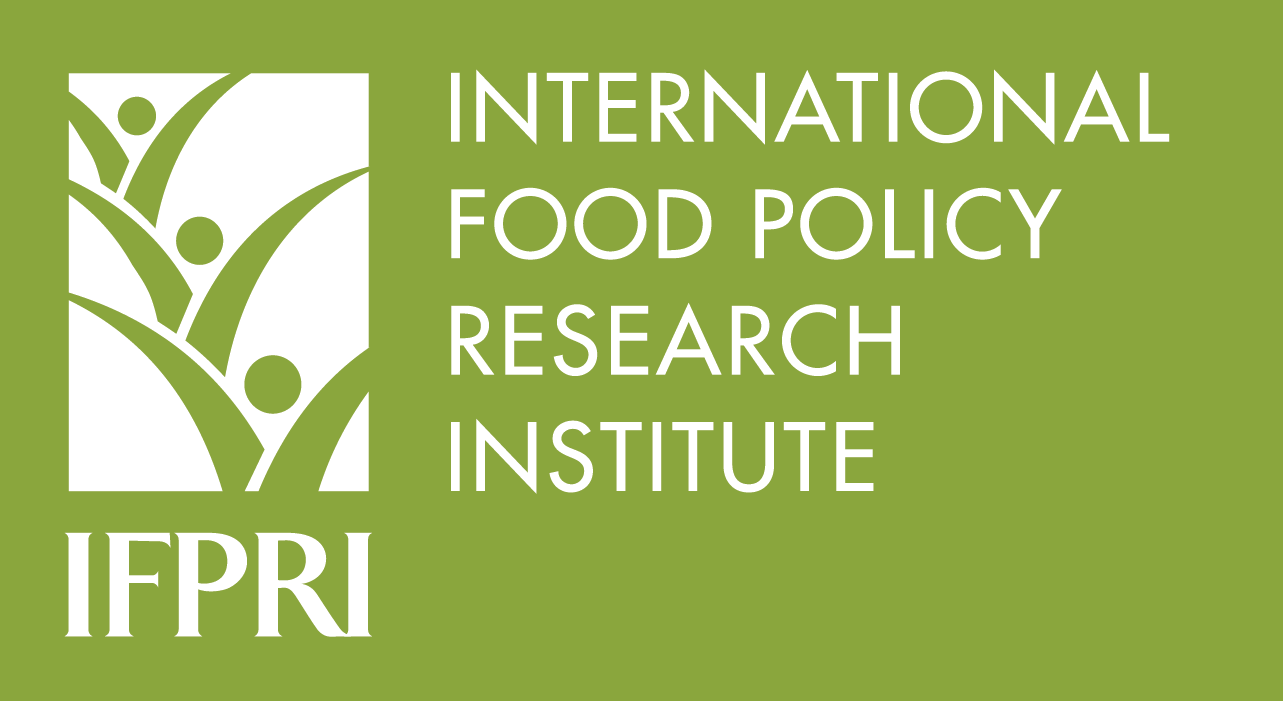Focal point
Location
About IFPRI
The International Food Policy Research Institute (IFPRI) provides research-based policy solutions to sustainably reduce poverty and end hunger and malnutrition in developing countries. Established in 1975, IFPRI currently has more than 500 employees working in over 50 countries. It is a research center of theCGIAR Consortium, a worldwide partnership engaged in agricultural research for development.
Vision and Mission
IFPRI’s vision is a world free of hunger and malnutrition. Its mission is to provide research-based policy solutions that sustainably reduce poverty and end hunger and malnutrition.
What We Do
Research at IFPRI focuses on six strategic areas:
- Ensuring Sustainable Food Production: IFPRI’s research analyzes options for policies, institutions, innovations, and technologies that can advance sustainable food production in a context of resource scarcity, threats to biodiversity, and climate change. READ MORE
- Promoting Healthy Food Systems: IFPRI examines how to improve diet quality and nutrition for the poor, focusing particularly on women and children, and works to create synergies among the three vital components of the food system: agriculture, health, and nutrition. READ MORE
- Improving Markets and Trade: IFPRI’s research focuses on strengthening markets and correcting market failures to enhance the benefits from market participation for small-scale farmers. READ MORE
- Transforming Agriculture: The aim of IFPRI’s research in this area is to improve development strategies to ensure broad-based rural growth and to accelerate the transformation from low-income, rural, agriculture-based economies to high-income, more urbanized, and industrial service-based ones. READ MORE
- Building Resilience: IFPRI’s research explores the causes and impacts of environmental, political, and economic shocks that can affect food security, nutrition, health, and well-being and evaluates interventions designed to enhance resilience at various levels. READ MORE
- Strengthening Institutions and Governance: IFPRI’s research on institutions centers on collective action in management of natural resources and farmer organizations. Its governance-focused research examines the political economy of agricultural policymaking, the degree of state capacity and political will required for achieving economic transformation, and the impacts of different governance arrangements.
Research on gender cuts across all six areas, because understanding the relationships between women and men can illuminate the pathway to sustainable and inclusive economic development.
IFPRI also leads two CGIAR Research Programs (CRPs): Policies, Institutions, and Markets (PIM) andAgriculture for Nutrition and Health (A4NH).
Beyond research, IFPRI’s work includes partnerships, communications, and capacity strengthening. The Institute collaborates with development implementers, public institutions, the private sector, farmers’ organizations, and other partners around the world.
Resources
Displaying 1141 - 1145 of 1521Social capital and gender in South Africa, 1993-98
The concept of social capital, well grounded in the sociological and anthropological literatures (for example, Coleman 1988), is increasingly being analyzed and used by economists and other development policy practitioners. The entry point for many economists is Robert Putnam’s research on Italian regional economic performance (Putnam 1993) and his subsequent work in the United States. For Putnam, “social capital refers to features of social organization such as networks, norms, and social trust that facilitate coordination and cooperation for mutual benefit” (Putnam 1995, 67).
Microfinance
Among financial institutions serving poor households around the world, microfinance programs have emerged as important players. These programs typically make small loans—sometimes as small as US$50 to US$100 and sometimes as large as several thousand dollars-to households lacking access to formal-sector banks (see, for example, Lapenu and Zeller 2001). One important achievement of the microfinance movement has been its relative success in deliberately reaching out to poor women living in diverse socioeconomic environments.
Intrahousehold impact of the transfer of modern agricultural technology: A gender perspective
Micronutrient malnutrition is a serious problem in developing countries. It is well established that micronutrient requirements are greater for women and children because of their special needs for reproduction and growth. Unfortunately, however, women and children suffer most from micronutrient deficiencies. Micronutrient deficiency impairs the cognitive development of young children, retards physical growth, increases child mortality, and contributes to the problem of maternal death during childbirth.
What have we learned from research on intrahousehold allocation?
Many decisions that affect the well-being of individuals are made within families or households. The processes by which resources are allocated among individuals and the outcomes of those processes are commonly referred to as “intrahousehold resource allocation.” Since the early 1990s a growing literature has paid increasing attention to the role that intrahousehold resource allocation plays in affecting the outcome of development policy (see Strauss and Thomas 1995; Behrman 1997; Haddad, Hoddinott, and Alderman 1997 for reviews).
Fish to 2020: supply and demand in changing global markets
While fishing must surely be one of the oldest recorded sources of livelihood, it is only comparatively recently that fish have become important components of the diets of the majority of the world’s people—especially those living in developing countries. Consumption of fish and seafood products reached 14 kilograms per capita in developing countries in 2001, nearly twice the level recorded in the early 1970s, while population in those countries doubled over the same period.







